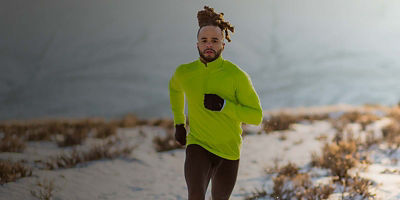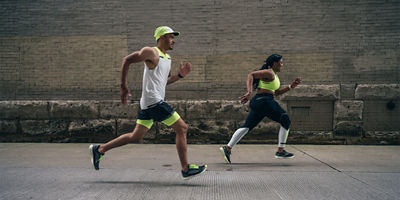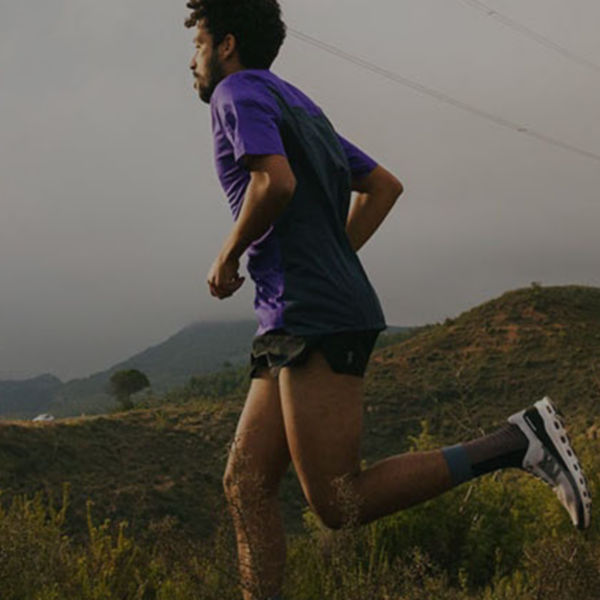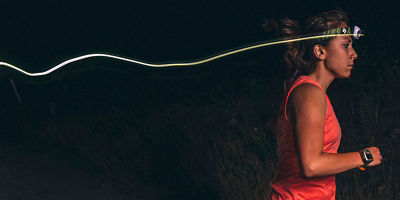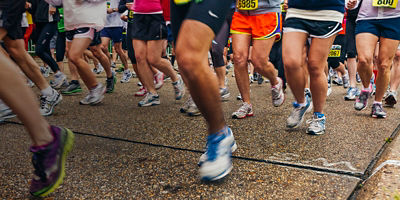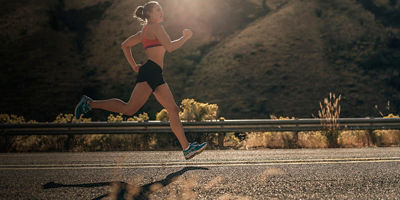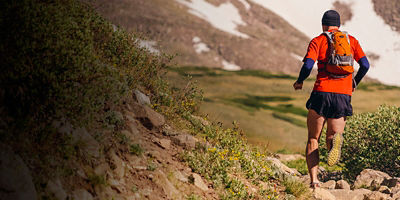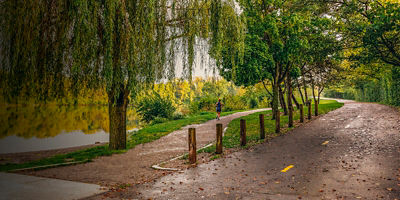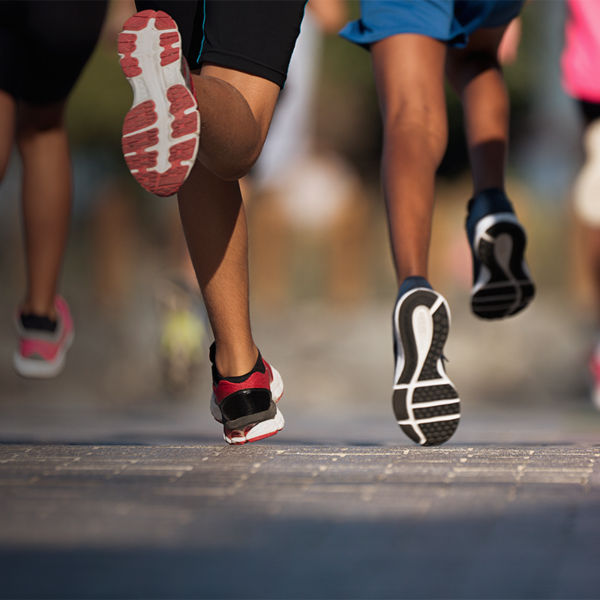
When the road or trail slopes downward, a lot of us breathe a sigh of relief; the work of cresting the hill, however big or small, is over. You’d think you could just shift into cruise control and let gravity provide a little free speed. You could, but your body would suffer, and you could also easily trip up and come face-to-face with the asphalt or dirt. Form matters. Here are some tips for saving your muscles and joints, being efficient (therefore, faster), and not hitting the deck.
FORM
Body Position
It’s natural to want to lean back when running downhill, as doing so slows your forward momentum. However, leaning backward in your upper body also puts added strain on your quads, and can lead to strains and other issues (at the very least, severe quad soreness). Leaning backward also hinders control of your body as your legs can feel like they’re getting away from you. And in a sense, they are.
Instead, aim to keep your torso over your legs, or even lean slightly ahead of them. (Just attempting to lean slightly forward will likely land you directly over your legs.) This takes added stress off your quads, and also allows you to control your legs from a more centered position.
Foot Strike
It’s also natural to land on your heels when running downhill, but doing so in an exaggerated sense creates more backward leaning; backward leaning leads to more heel-striking. Aim for landing more on your midfoot or lightly on your heel to help overall body positioning and minimize over-striding (which can lead to strains and lack of control).
Shorter strides, versus longer, will also help with where on your foot you land. And shorter strides help you stay in better control than longer strides. Imagine tripping on a rock in the middle of a short stride versus in the middle of a long, gaping stride. It’s easier to recover and regain balance when the stride is short.
On flats and on downhills, it behooves you to run lightly and avoid a slappy sound to your feet hitting the ground. (This happens naturally on uphills.) Instead, shift forces upward to spread throughout your body, and control those footfalls, aiming for graceful, quiet steps instead of loud ones.







